Baking Soda for Tomato Plants: The Secret to Healthier Crops
Baking soda for tomato plants might just be the gardening hack you didn’t know you needed. From tackling pesky fungi to improving soil health, this simple kitchen staple packs a punch. Curious if it can actually sweeten your tomatoes? Or how to use it without harming your plants? This guide spills all the secrets to keeping your tomato plants thriving. Let’s dive in and uncover the magic behind baking soda in your garden!
What is Baking Soda?
Baking soda, also known as sodium bicarbonate, is a white, crystalline powder with alkaline properties. Chemically, it’s a compound made of sodium, hydrogen, carbon, and oxygen. The chemical formula is NaHCO3. Its primary function is to neutralize acids, making it a popular ingredient in cooking and cleaning. In gardening, baking soda is valued for its ability to address fungal infections, balance soil pH, and even deter certain pests.
Benefits of Baking Soda for Tomato Plants
1. Antifungal Properties
Baking soda’s alkaline nature makes it a natural antifungal agent. When applied to plants, it creates an environment that inhibits the growth of fungi such as:
- Powdery Mildew
- Early Blight
- Late Blight
- Black Spot Disease
These common diseases can stunt the growth of tomato plants, affect fruit production, and even kill the plant if left untreated.
2. Pest Control
Baking soda can deter certain pests, such as aphids and spider mites. While it doesn’t kill pests outright, its presence creates an unfavorable environment for these harmful insects.
3. Soil Health
Tomato plants thrive in soil with a pH level between 6.0 and 7.0. Baking soda helps to neutralize over acidic soils, ensuring that plants can absorb essential nutrients like nitrogen, phosphorus, and potassium.
4. Enhanced Fruit Sweetness
There’s a popular belief among gardeners that baking soda can sweeten tomato fruits. By reducing soil acidity, the plant focuses more energy on producing flavorful, sweet fruit instead of dealing with environmental stressors.
Using Baking Soda on Tomato Plants
1. Preparing a Baking Soda Solution
To harness the benefits of baking soda, it’s important to use the right solution. Here’s a simple recipe:
Ingredients:
- 1 tablespoon of baking soda
- 1 gallon of water
- Optional: 1 teaspoon of mild dish soap (helps the solution stick to leaves).
- Optional: A few drops of neem oil for added pest control.
Instructions:
- Fill a clean spray bottle with water.
- Add the baking soda and stir until it dissolves completely.
- If using, mix in dish soap and neem oil.
- Shake the bottle well to ensure all ingredients are combined.
2. How to Apply Baking Soda to Tomato Plants
When to Spray:
Early morning or late evening to prevent leaf burn from direct sunlight. Apply every 7–10 days during the growing season, or after heavy rain, which can wash away the solution.
Where to Spray:
Focus on the undersides of leaves, where pests and fungi often hide. Spray stems, leaves, and surrounding soil for comprehensive coverage.
How Much to Use:
Avoid drenching the plant; a light mist is enough. Overapplication can lead to leaf burn or soil imbalances.
Is it safe to Use Baking Soda for tomato plants?
When used correctly, baking soda is safe for tomato plants. It’s a natural, non-toxic alternative to chemical pesticides and fungicides. However, there are a few precautions to keep in mind:
Avoid Overuse: Excessive application can harm plants by causing leaf burn or disrupting soil pH.
Test First: Apply the solution to a small area of the plant before full application to ensure it doesn’t cause adverse effects.
Moderate Concentration: Stick to the recommended ratio of 1 tablespoon per gallon of water.
Baking soda is eco-friendly and won’t harm beneficial insects like bees when used sparingly.
Common Issues and Solutions When Using Baking Soda
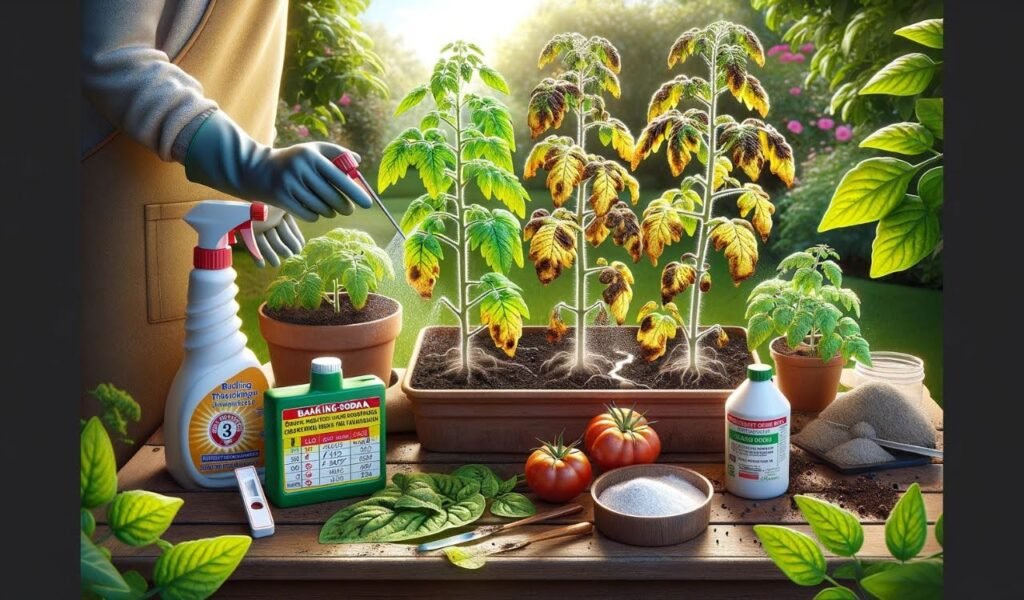
1. Leaf Burn
If your tomato plant’s leaves turn brown or curl after spraying, it may be due to:
- Applying the solution in strong sunlight.
- Using too much baking soda.
Solution:
- Rinse the plant gently with water to remove excess solution.
- Adjust the concentration and spray during cooler times of the day.
2. Soil Alkalinity Imbalance
Overuse of baking soda can increase soil alkalinity, making it difficult for plants to absorb nutrients.
Solution:
- Test soil pH regularly with a soil testing kit.
- If the pH is too high, amend the soil with sulfur or organic compost to restore balance.
3. Ineffectiveness Against Severe Fungal Infections
For serious fungal issues, baking soda alone may not be enough.
Solution: Use baking soda in combination with neem oil or a copper-based fungicide for more severe cases.
Baking Soda vs. Other Natural Remedies
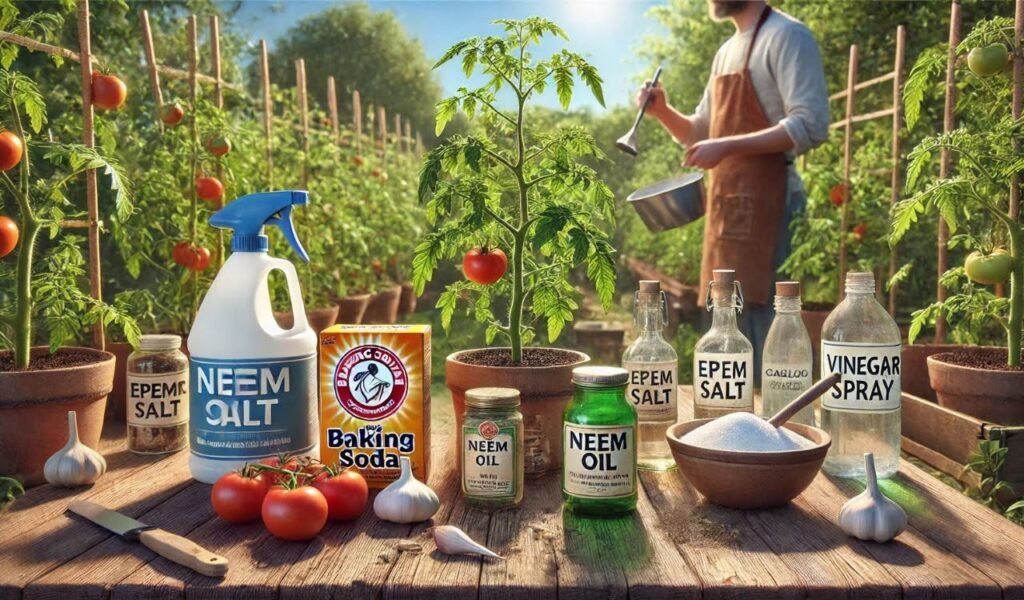
1. Neem Oil
Use: Effective against pests and fungal infections.
Comparison: Neem oil is stronger but requires careful handling to avoid harming plants.
2. Epsom Salt
Use: Provides magnesium and sulfur to improve nutrient uptake.
Comparison: Baking soda addresses fungal issues, while Epsom salt supplements soil nutrients.
3. Garlic or Vinegar Sprays
Use: Garlic repels pests; vinegar kills weeds.
Comparison: Vinegar is harsher and can damage tomato plants if overused, while baking soda is gentler.
Tip: Use baking soda for preventive care and combine it with other remedies for comprehensive plant health.
FAQ
What does baking soda do to tomato plants?
Baking soda prevents fungal growth, deters pests, and helps balance soil pH.
How much baking soda should I use?
1 tablespoon per gallon of water is the recommended ratio.
Can I use baking soda on indoor tomato plants?
Yes, but ensure proper ventilation and avoid overapplication to prevent residue buildup.
Does baking soda harm beneficial insects?
No, baking soda is safe for pollinators like bees when used correctly.
How soon can I see results after using baking soda?
Fungal issues often improve within 7–10 days of regular application.
Final Thoughts
Baking soda is a natural, affordable, and effective solution for maintaining healthy tomato plants. Its antifungal properties, ability to deter pests, and potential to enhance fruit sweetness make it a favorite among gardeners. Remember, successful gardening requires patience, experimentation, and proper care. Whether you’re growing tomatoes in your backyard or inside your home, a well-informed approach ensures a bountiful harvest. So grab some baking soda, follow these tips, and watch your tomato plants thrive!

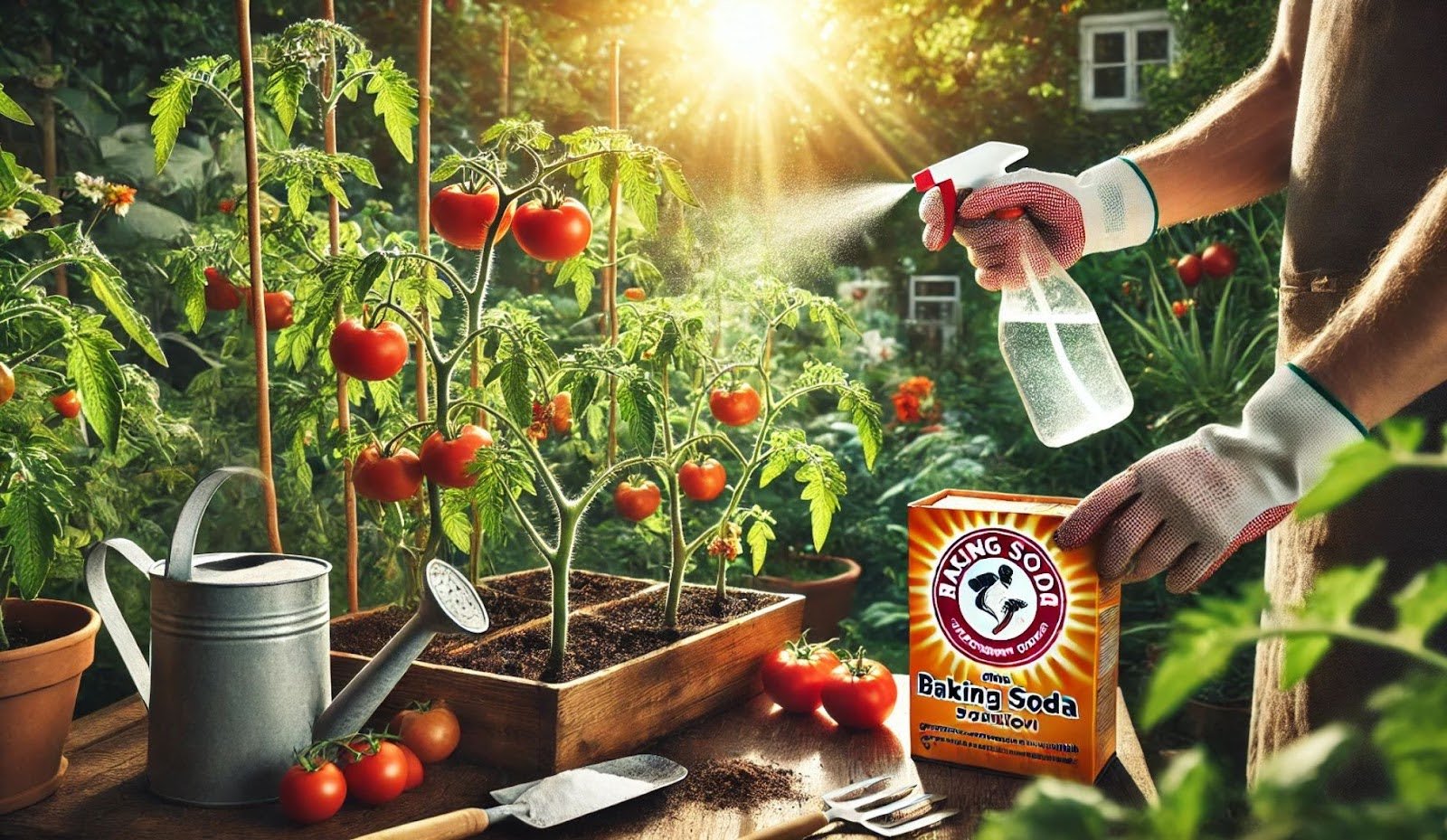

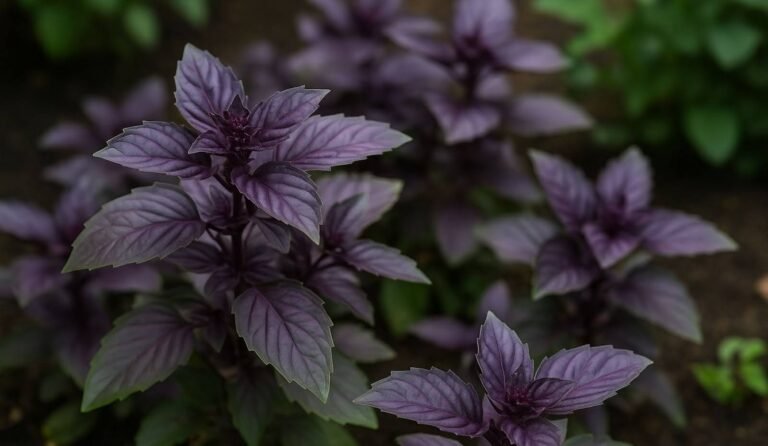
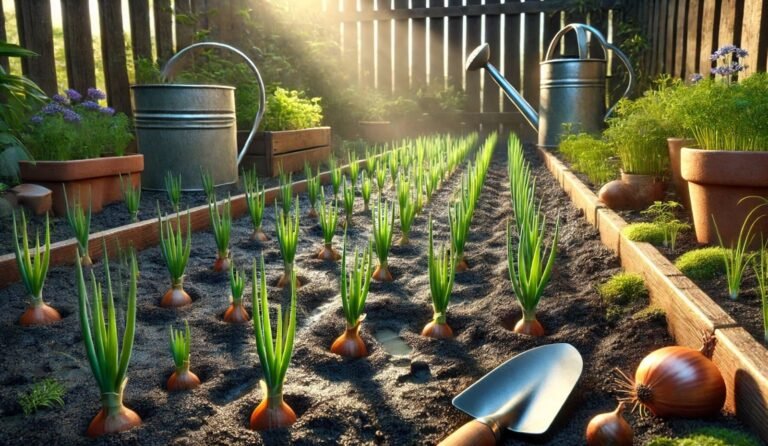

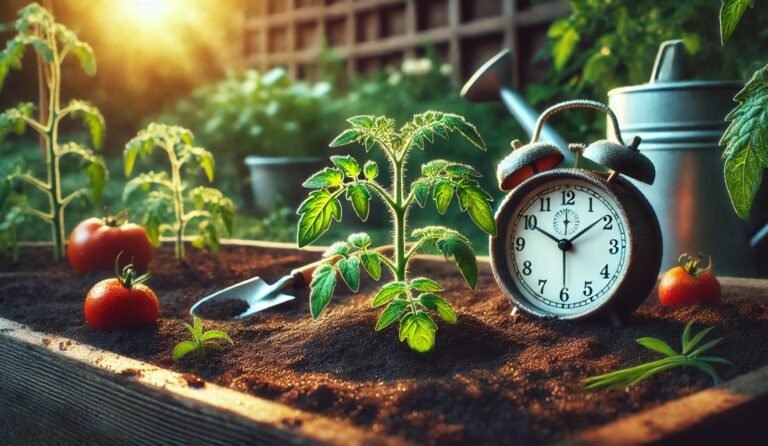

This article is very useful, thank you for making a good article